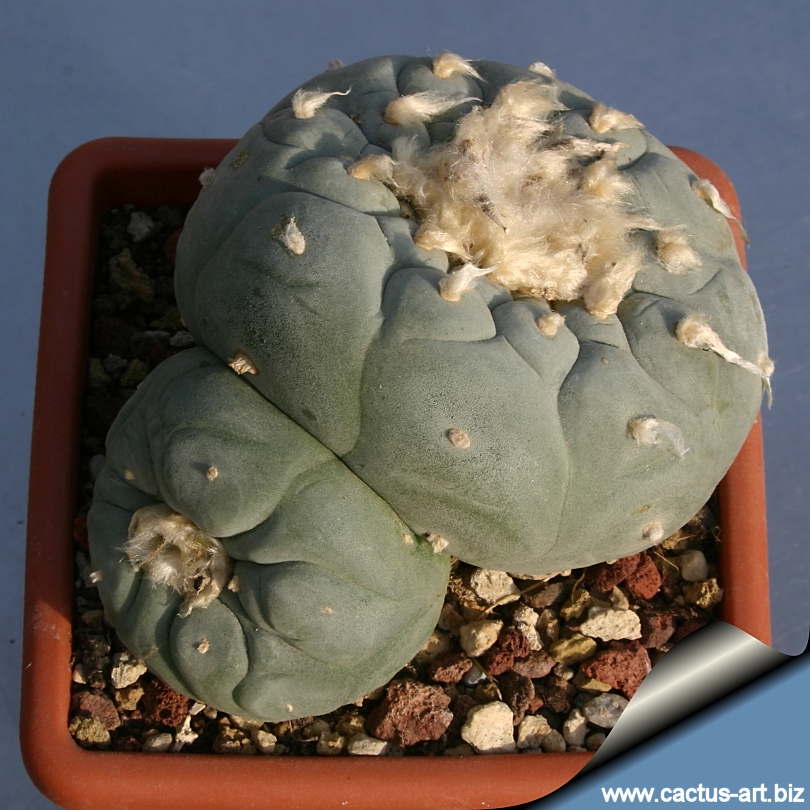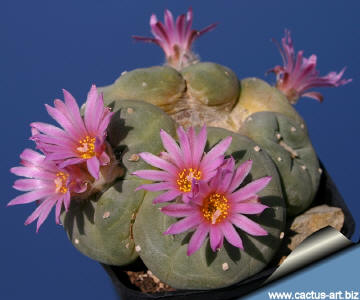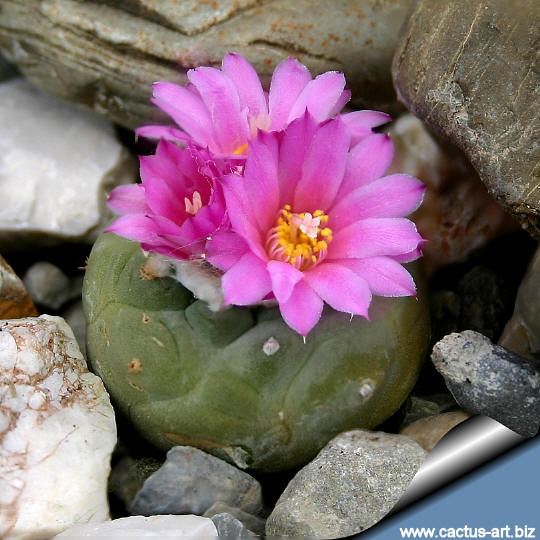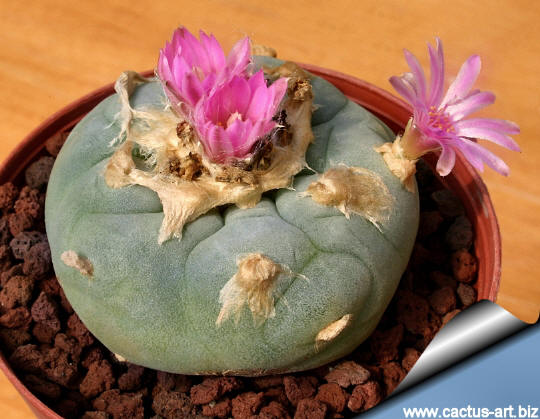|
|
|

Lophophora fricii
Again a very beautiful variety with large striking pink blooms from the
notorious Lophophora family.
|
 |
Description: Globular
spineless cactus with large tap root.
Stem: Pale grey-green to yellow-green, usually lacking well defined ribs and
furrows.
Ribs: 5 to 13 the
podaria are rarely elevated, but are broad and flat.
Areoles: With tufts of hairs that usually spread unequally on the
prominent podaria.
Flowers: Commonly pale to dark pink ( or rarely pinkish white),
reaching over 4 centimeter in diameter.
In habitat Lophophora fricii is a very mutable species. It´s
hardly to find two similar plants at one location. Particularly in terms
of the bloom they are different at the same locations.
|
|
Propagation: Seeds. Seeds should be sown in spring in sterile
cacti mix. Cover with a humidity dome or plastic wrap and leave in a
warm spot in 50-75% shade. Fluctuating temperatures are best (ie. high
day temperature and low night temperature) as they simulate the desert
environment. Keep constantly humid as seedlings cannot survive if to
dry. Seedlings will emerge in 7-21 days and can be grown in the same
environment for a number of months. Mulch with thin layer of small
quartz gravel (1-2mm diameter) this helps them stay upright, hinders
algae growth and regulates moisture. As they get older the watering can
become less frequent. Potting up can be done when 5-10mm in diameter.
Cultivation: Slow growing. Because of the tap root
they are very rot prone, so use highly gritty compost with much drainage.
Requires half shade to part sun. Watering: watering should be
rather infrequent to keep the plant compact and
avoid it becoming excessively elongated
and unnatural in appearance. Watering
it properly is often difficult, because this
plant tends to crack open or rot if over-watered.
The fact that the plant retracts into the soil and assumes a grey-green
colouring between watering, is perfectly natural, and doesn’t cause any
damage.
Overwatering: Keep completely dry and cool in winter (An unheated
greenhouse would be perfect) or when night temperatures remain below 10°
C, it can survive low temperatures (appr. -7°C) for a short
period. Assure a good ventilation.
|
|


Advertising
|
|
|
|
|
Family:
Cactaceae (Cactus
Family)
Scientific Name:
Lophophora diffusa ssp. fricii
(Haberm.) J.J. Halda,
Cactaceae etc., cf. Repert. Pl. Succ. (I. O. S.), 7 (2): 61; 48: 10
(1997 publ. 1998): 1997
Common Name include: False peyote.
Origin: This species grows around the lagoon near Viesca
in the state of Coahuila, Northern Mexico. |
|
Conservation status: Listed in
CITES appendix 2.
|
|
Etymology: Designated after A.V. Fric
1882-1944 a czech collector of cacti.
|
Synonyms:
- Lophophora fricii Habermann
Kaktusy,: 123; cf. Habermann in
Kaktusy, 11 (1): 5 (1975). 1974
- Lophophora lutea f. fricii
Haberm
- Lophophora williamsii v. fricii
(Haberm.) R. Grym,
Rod Lophophora: cf. Repert. Pl.
Succ. (I. O. S.), 56; 48: 10 (1997 publ. 1998): 1997
- Peyotl zacatensis var.fricii
|
|
|
|

Lophophora fricii (San Pedro)
Intensive pink pink flowers

Lophophora fricii (Parras de la Fuente, Coahuila, Mexico )
|
|
Photo of
conspecific taxa, varieties, forms and cultivars of Lophophora
diffusa.
|
|